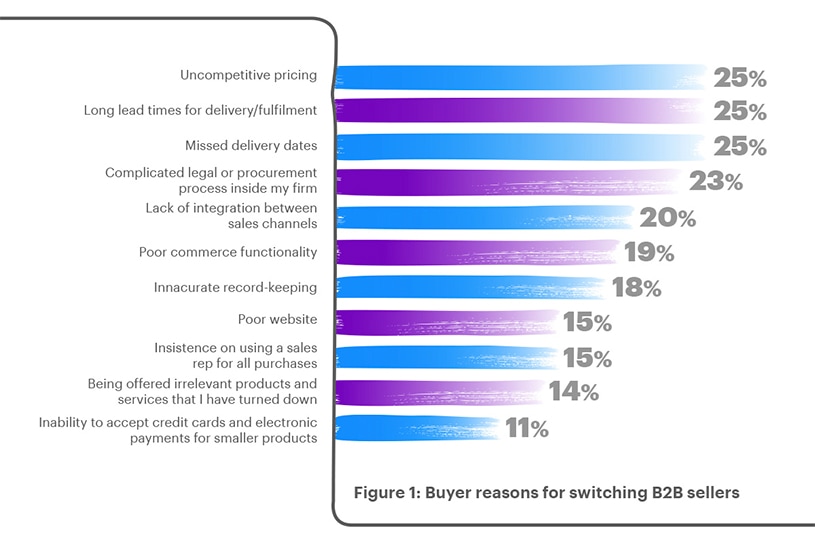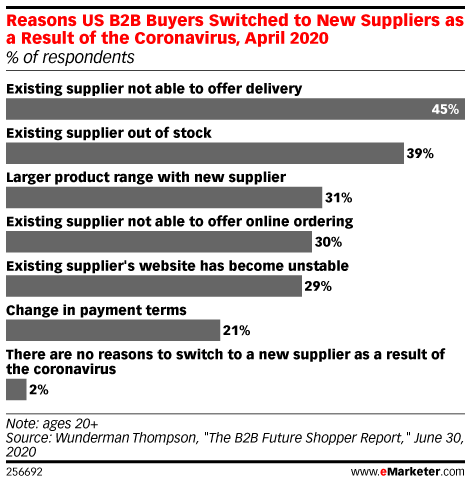The B2B landscape is changing, fast. In large, that shift has been driven by a change in B2B buyers themselves, their expectations and the implications and constraints of a global pandemic.
According to Accenture, 80% of B2B buyers report that they have switched suppliers at least once within a 24-month period.
Like all consumers, B2B buyers have a wealth of options for their product and service needs. Within the Service is the New Sales report, Accenture was able to identify 10 things buyers really want from the B2B sellers:
- Competitive pricing
- Broad range of flexible, high-quality services or products
- Fast resolution to all issues
- More value for money spent
- Speedy and efficient service response
- Ability to contact seller according to their preferences
- A website that easy to use
- Recommendations of appropriate products and services
- Ability to research or purchase according to their preferences
- Ability to be served seamlessly across channels
Being out of sync with your buyer will hinder their success, ultimately causing a fracture in the relationship. Here are key challenges as a result of this misalignment:
- B2B sellers not meeting buyers’ needs
- Failing to seamlessly combine tech and human interaction
- An organizational disconnect – company cultural resistance to change
For B2B sellers that wish to overcome these challenges and use the insight as an opportunity to offer more connected experiences and better service, Accenture outlines 3 steps for you take:
- Step 1 – Use tech to unlock powerful data and overcome service barriers
- Step 2 – Develop a team to harmonize digital tools and human interaction
- Step 3 – Change internally
Why B2B Buyers are Switching Suppliers
Frustrations with suppliers brewed prior to the COVID-19 outbreak. While some may have offered leniency before, they’ve found new reasons to make a change. Here’s a comparison of why buyers once left their suppliers to why they’re leaving amid crisis.


Though these are two different studies over different periods of time, it’s clear that B2B buyers have recurring issues with suppliers’ supply chain shortcomings, website and payment portals.
COVID-19 has exposed operational fragility within B2B businesses. Those that are slow to react and less resilient can’t withstand and/or manage the disruption. Unfortunately, neglecting to adapt to the needs and wants of your consumer has resulted in a loss of trust and business.
